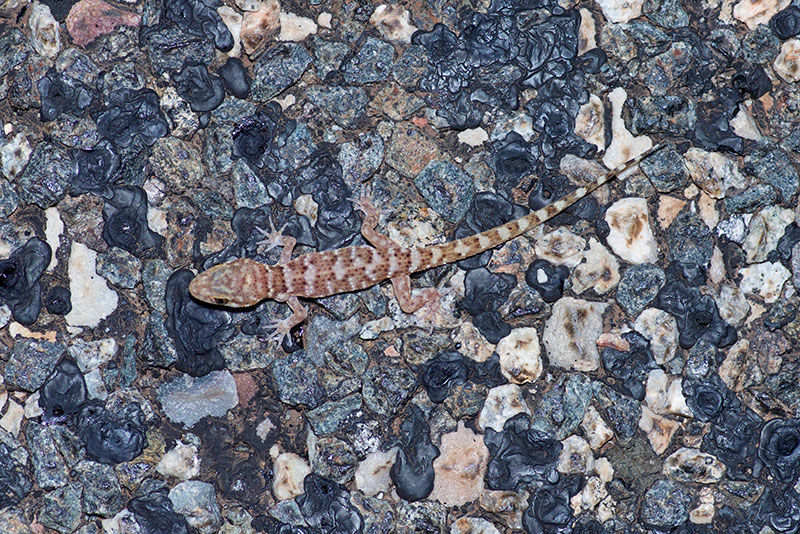Near Alice Springs I had achieved my lifetime herping goal of finding a wild thorny devil. Once that occurred, I had no specific goals for the rest of my trip. I just wanted to see and photograph as many different herps as I could find. My next stop was the Glen Helen Lodge inside West MacDonnell Ranges National Park. Glen Helen is in a spectacular spot along the Finke River just off of Namatjira Drive, which winds through beautiful and varied landscapes back toward Alice.
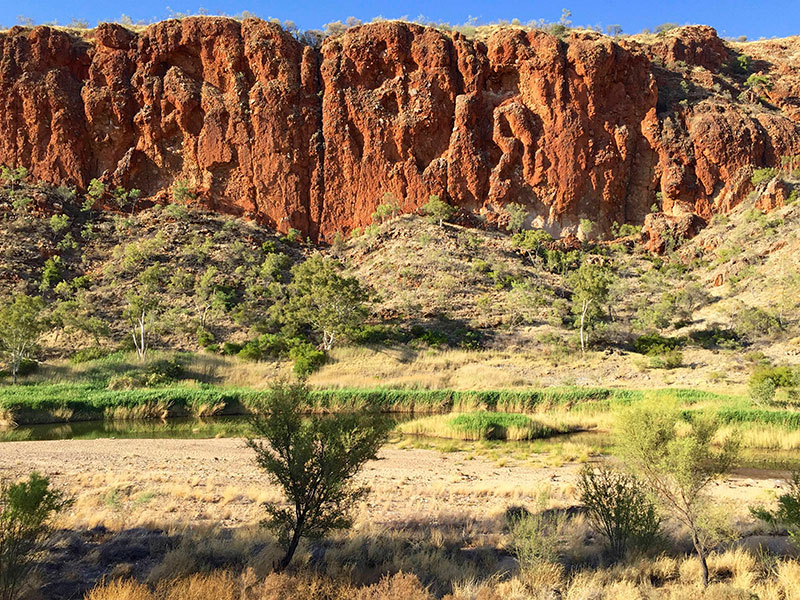
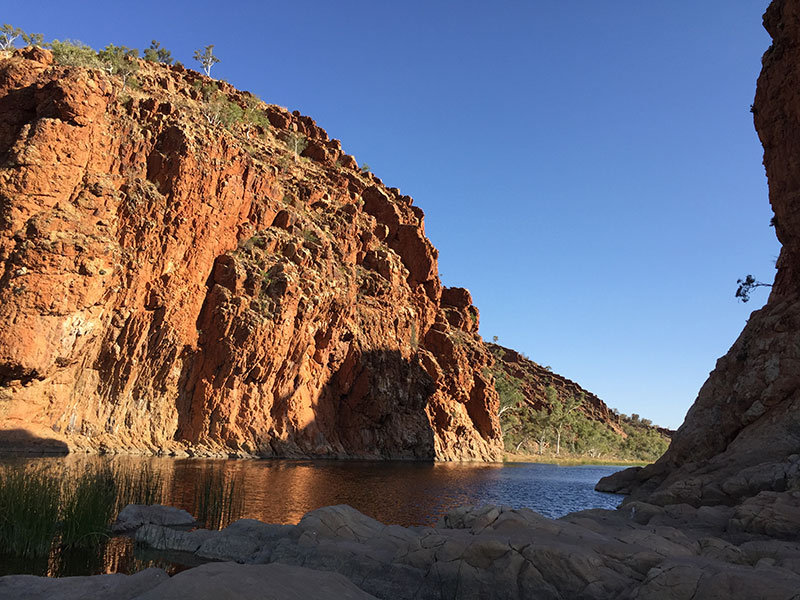
I only saw a couple of different types of herps around the lodge itself, both lizards. By day I saw a few shy Long-nosed Water Dragons, overwhelmingly the most common agamid in this part of the country, in my experience.
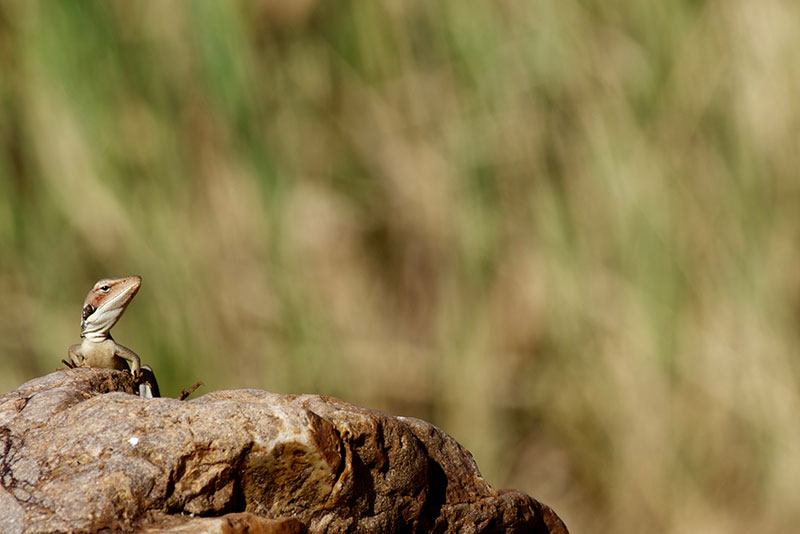
By night Glen Helen Lodge was the stomping grounds of many Variegated Dtellas, common "house geckos" throughout much of Australia. What I have always wondered about these guys is: what the heck does "Dtella" mean? The best I've managed to dig up so far is that it was probably an aboriginal word or a corruption of an aboriginal word, though I have not found even any guesses for the question "an aboriginal word for what, exactly?"
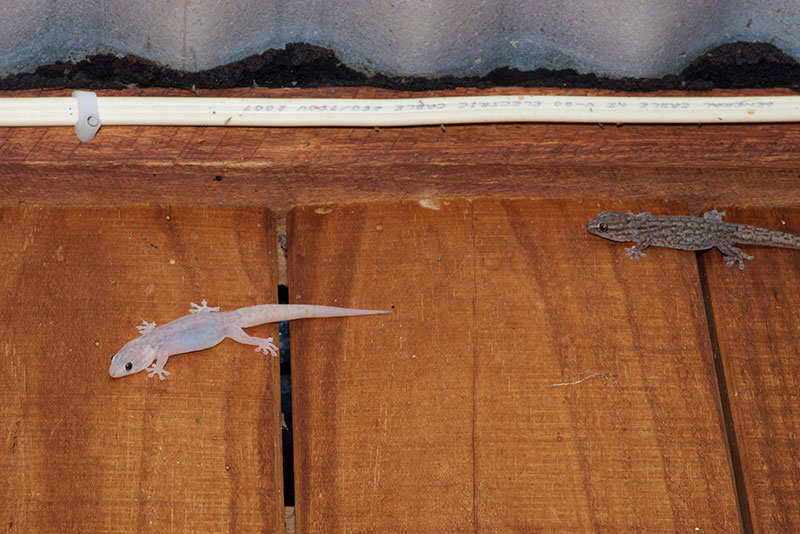
Just as at Uluru, I ran across very few herps during the daytime in the West MacDonnells. Again, I'm not sure why; the weather seemed warm enough, and the habitat certainly looked perfect. My best guess is that I was too early in the springtime for the heat-loving desert lizards. But that's OK, I timed my trip to maximize my chance of finding thorny devils, not for maximizing daytime herps in the Red Centre. I'm not complaining!
Here is some perfect-looking habitat:
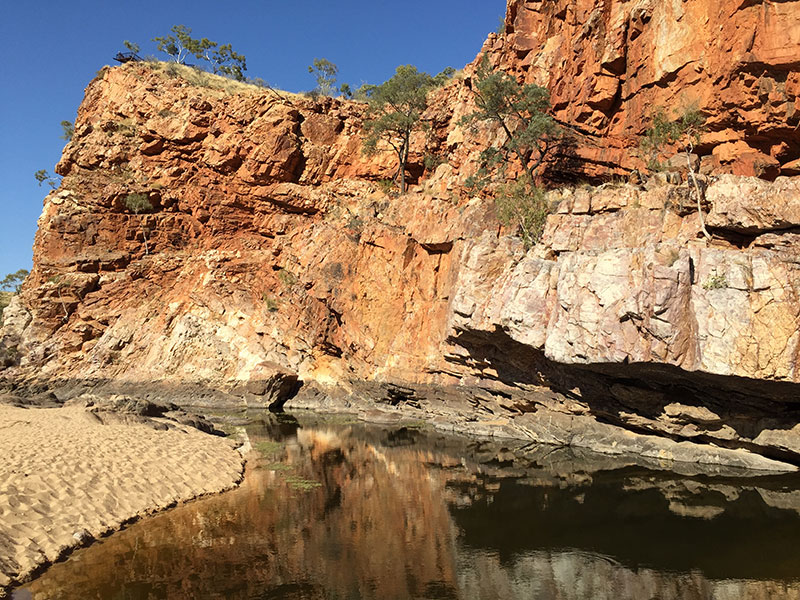
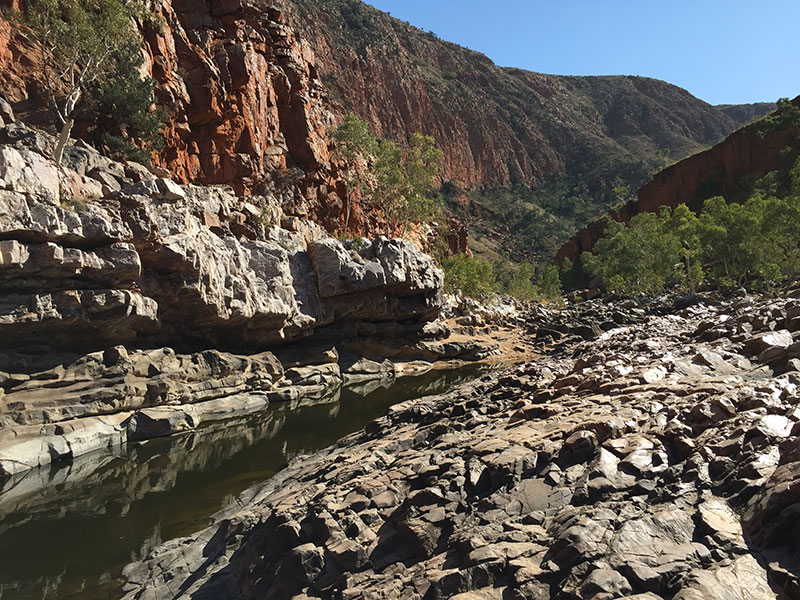
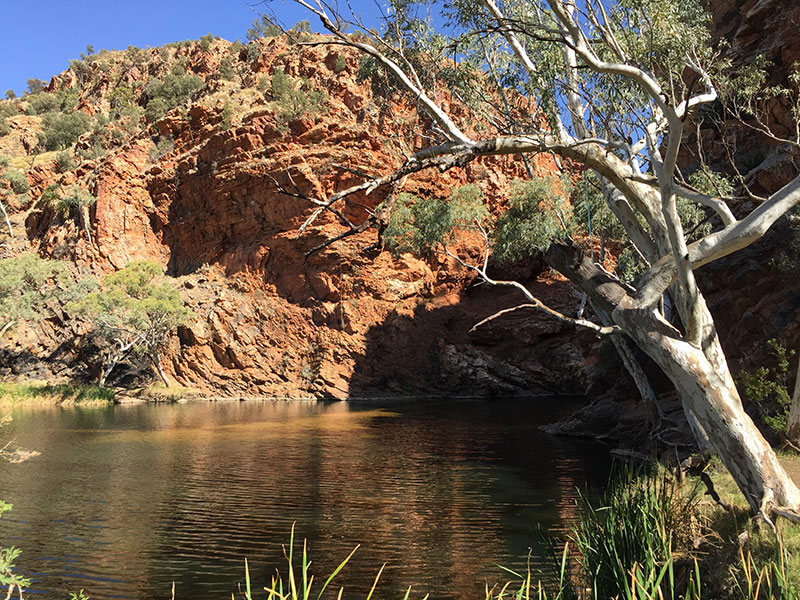
Apart from one or two small skinks that skittered away unidentified and unphotographed, the only daytime herps I saw in either place were a handful of those Long-nosed Water Dragons. They are fine lizards, with the most ridiculously long tails I've ever seen on lizards.
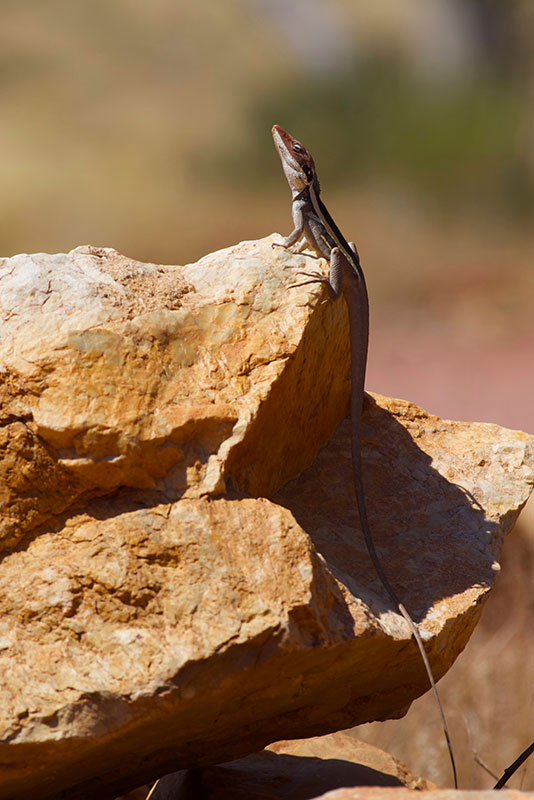
Shouldn't this be a Long-tailed Water Dragon?
Nighttime was a different story. I came across a nice variety of herps both road-cruising Namatjira Drive and hiking gorges by night. Many of the road geckos were the same species I had seen east of Alice and down near Uluru, like these:
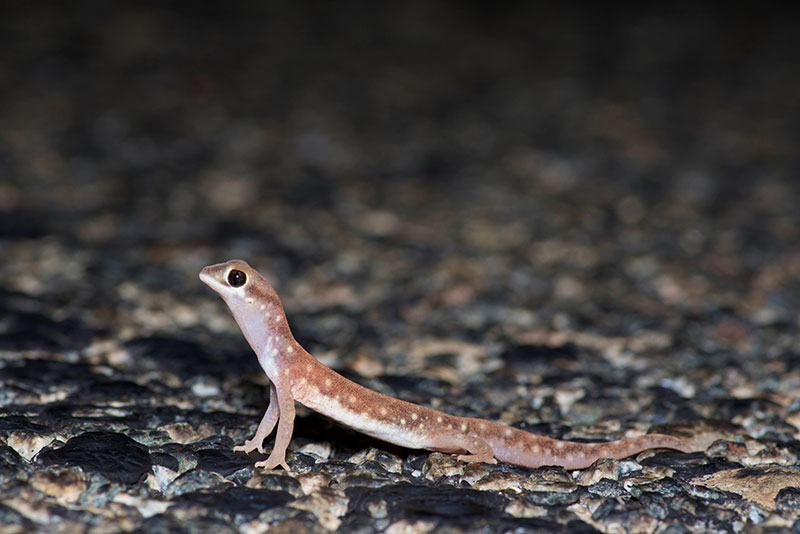
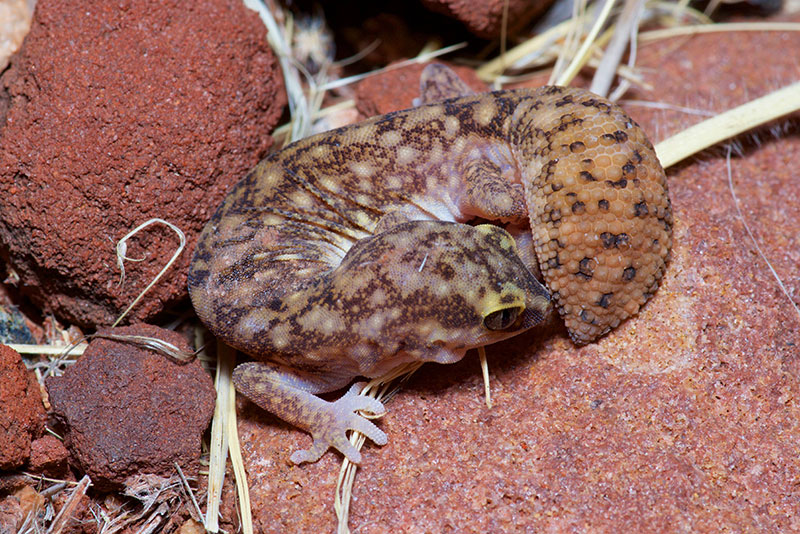
I did find a couple of new-to-me gecko species on this road also. First up was a species closely related to and very similar to the Northern Spiny-tailed Gecko: the uncreatively named Southern Spiny-tailed Gecko. (For those of you paying attention, their ranges overlap, which is why I found a Southern Spiny-tailed Gecko north of where I had previously found Northern Spiny-tailed Geckos.)
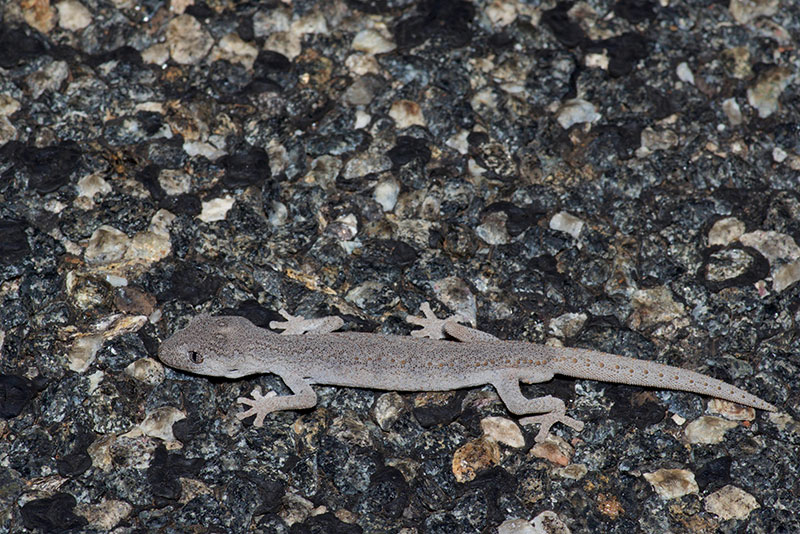
Last and by far best of the West MacDonnell road geckos was this adorably cute little gecko that tried but utterly failed to look scary. This is a young Centralian Knob-tailed Gecko. They get quite large, for geckos; this species is considered the most massive gecko in Australia, but this young 'un was only about two inches long.
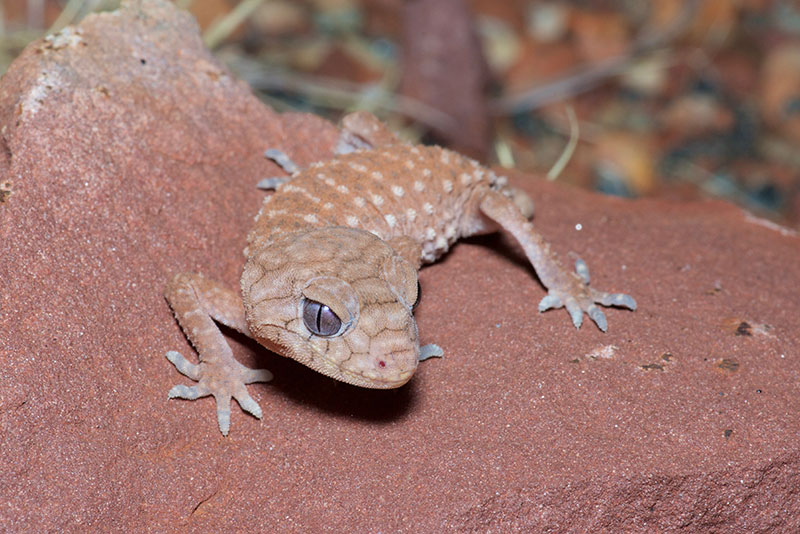
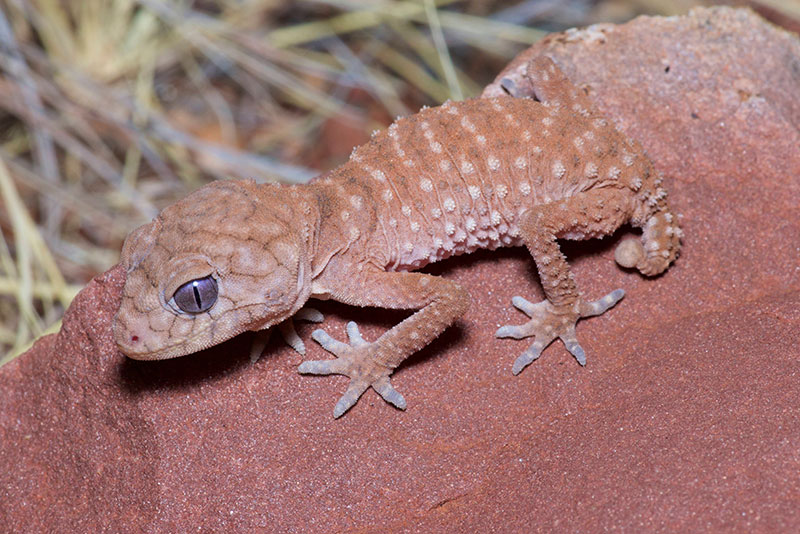
My first legless squamate in this area was a gorgeous Burton's Snake-lizard. This is Australia's most widespread herp, beating out even Bynoe's Gecko. They are extremely snake-like lizards, quite variable in color and pattern. I had seen a couple on previous trips to Australia but this one was the most beautiful, hands-down (feel free to laugh uproariously at this joke).
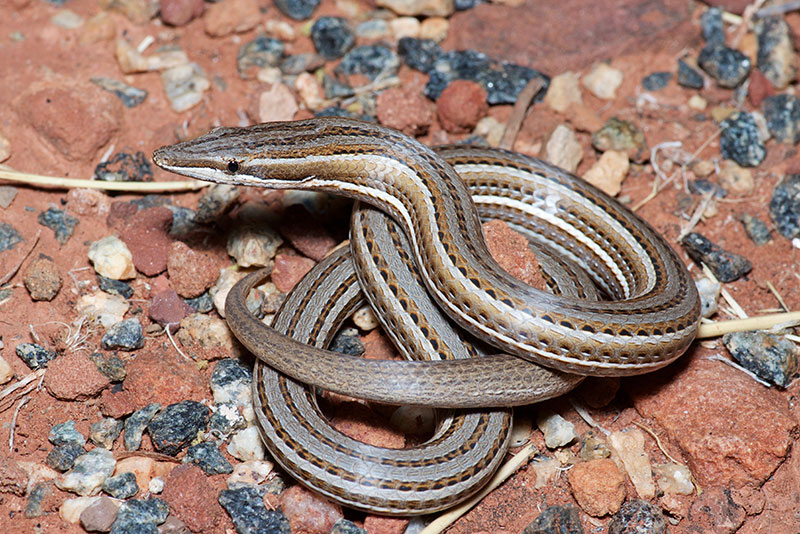
It took me a few moments to register what I was seeing in these next photos. I eventually realized that it was a dead legless lizard being pulled off the road by a single ant. I presume the lizard was hit by a car, although it had no obvious injuries other than damage on its snout where the friggin' ant was pulling it off the road. I'm reasonably sure that the lizard is a Spinifex Delma. I have no idea what kind of ant was involved. I'm not sure I want to know. It might haunt my dreams.
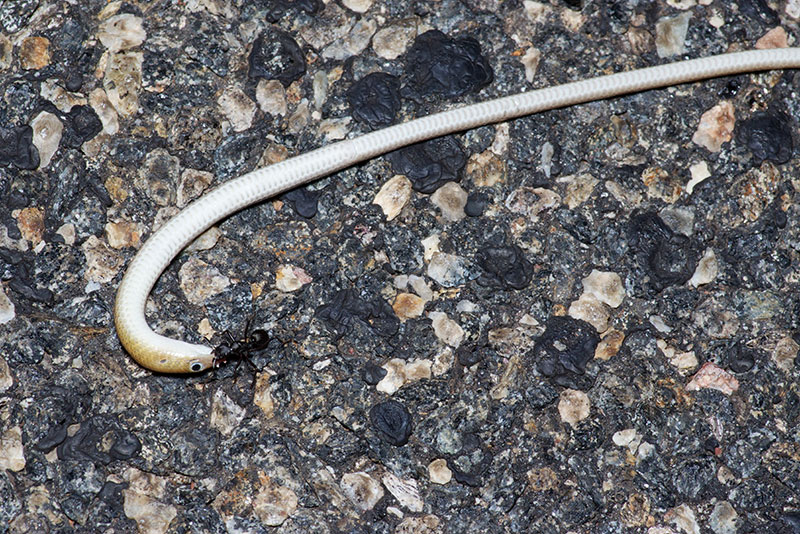
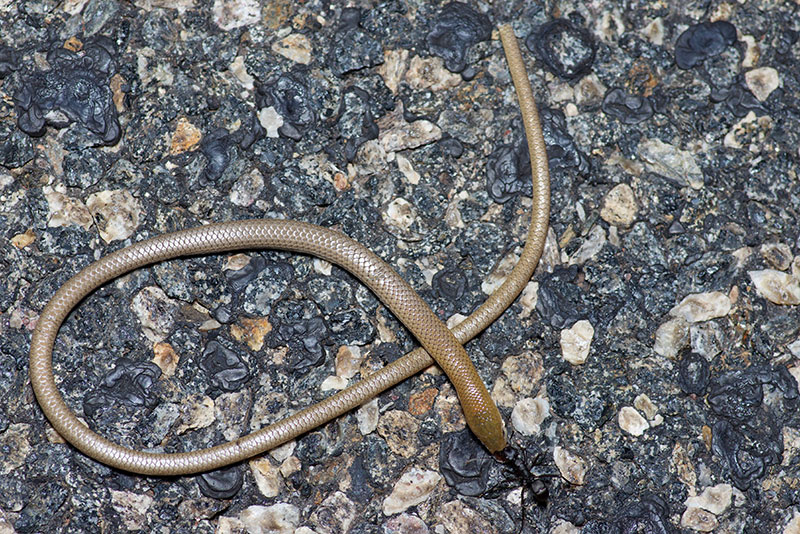
Namatjira Drive finally broke the snakeless streak I had been on since the unidentified garter-snake-sized serpent from Royal National Park a whole week earlier. The first snake I spotted on the road at night was an Orange-naped Snake, also known as a Moon Snake. This was a little guy, maybe 7 or 8 inches long. It displayed an odd defensive/evasive behavior: when I got close to it with my camera, it would lift its head and the front part of its body off the ground and start pushing them straight up into the air, as if it were climbing an invisible wall. After a few seconds of this its center of gravity would be unsupportably high and it would topple over awkwardly. It did this again and again as I circled to different angles to try to get non-silly-looking photos.
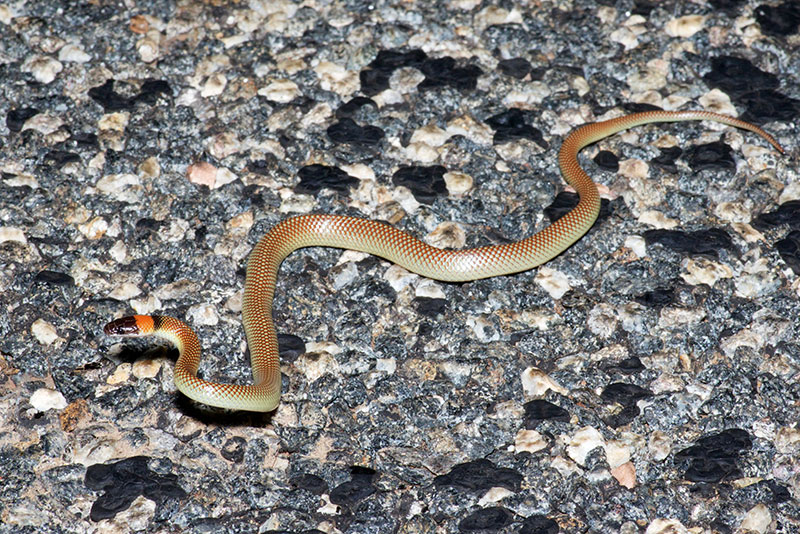
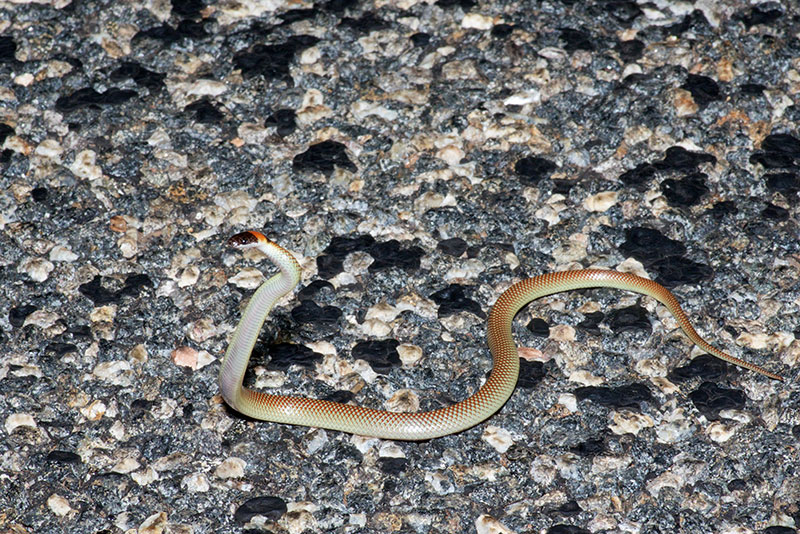
The second, third, and fourth snakes I spotted on the road at night were also Orange-naped Snakes. Apparently this is not a rare species in this neck of the woods. Here's a bigger one, maybe 18 inches long, with a particularly well-defined reticulated pattern.
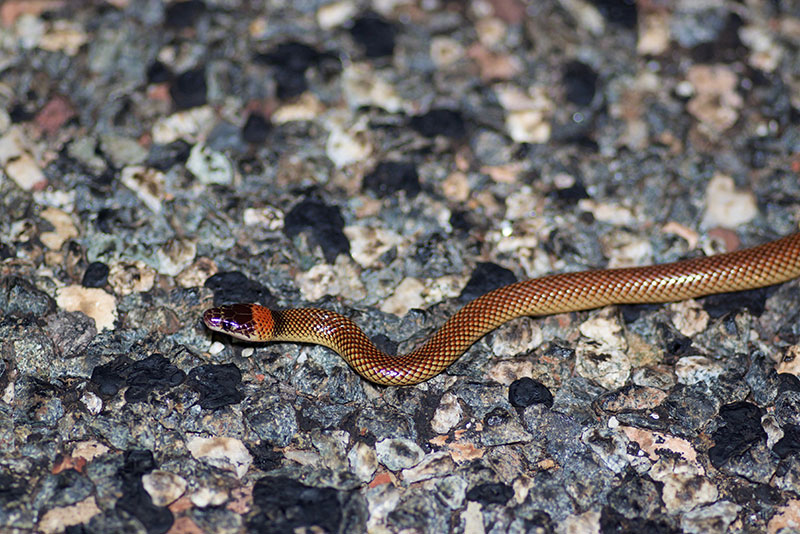
I saw a couple of snakes on Namatjira Drive that disappeared before I could identify or photograph them. And then there was a little blind snake, whose powers of wriggliness almost but not quite allowed it to join those ranks. There are several blind snakes whose ranges include this area; from its proportions, coloration, and snout shape I think this one is a Centralian Blind Snake.
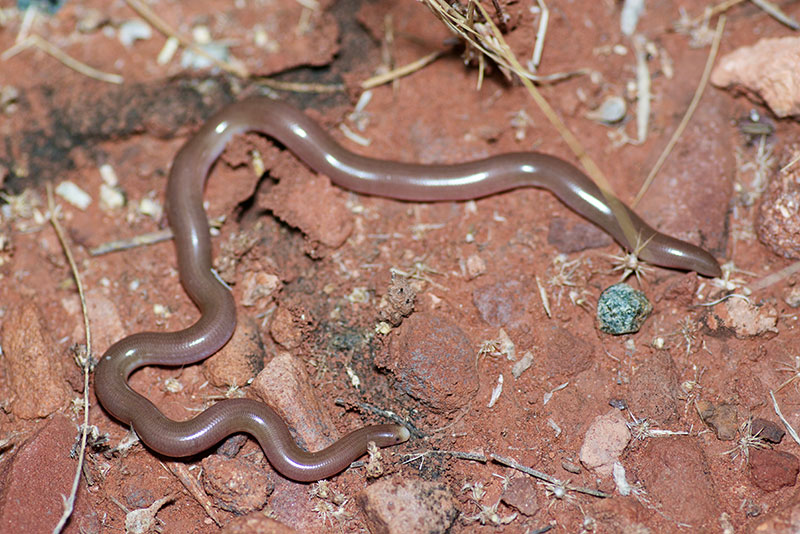
The various river gorges are home to a few frog species. The most widespread and common is the Desert Tree Frog, although Cogger among others thinks this is a species complex just waiting to be studied and split.
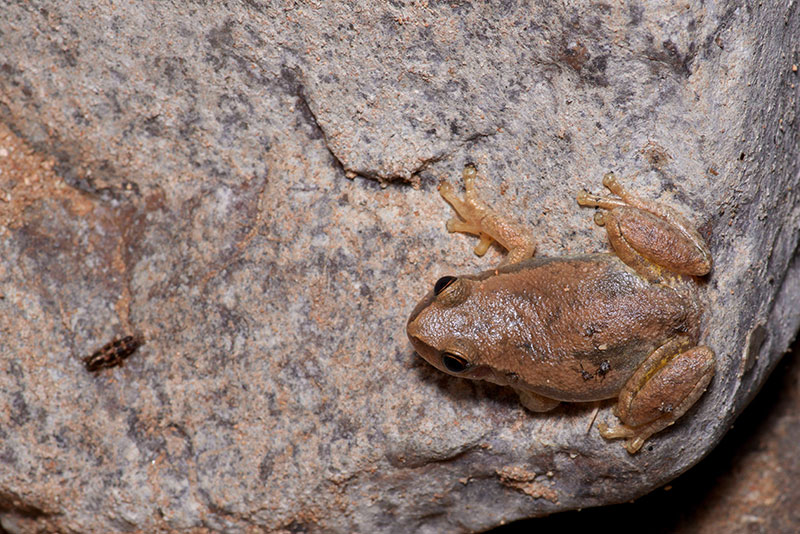
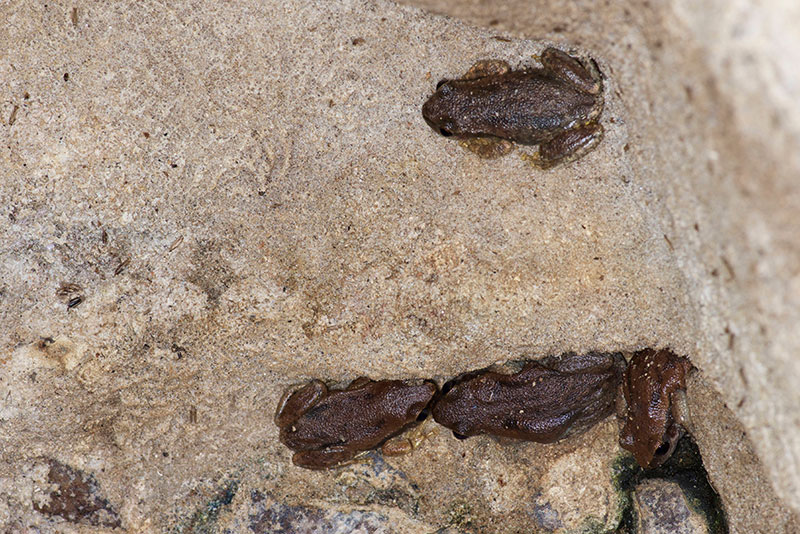
Larger and more colorful Centralian Treefrogs have a far more restricted range, occupying only permanent or semi-permanent waterholes in rocky ranges of the Red Centre.
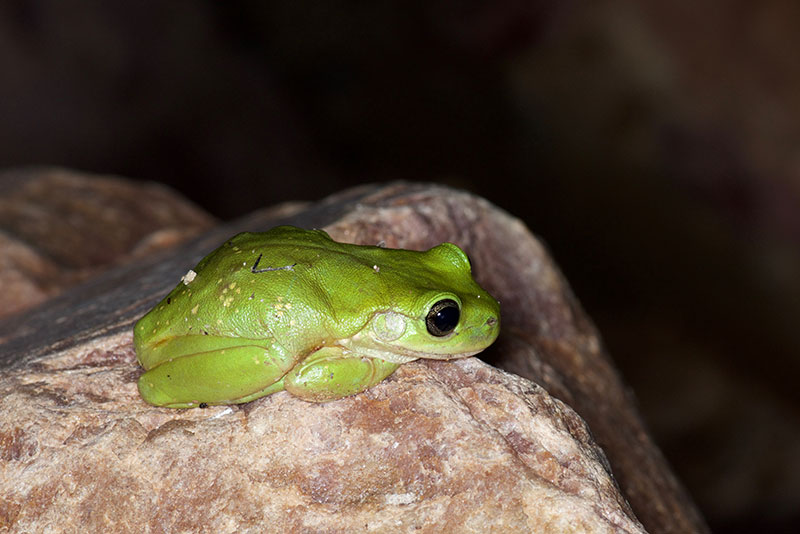
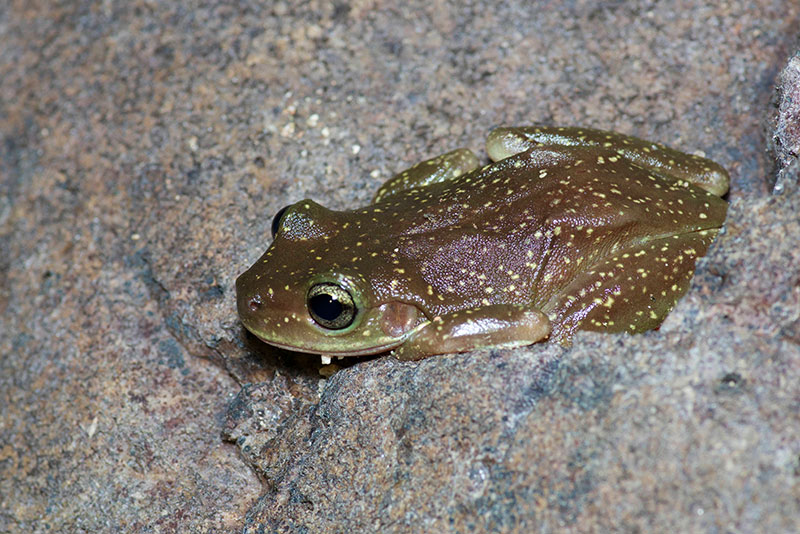
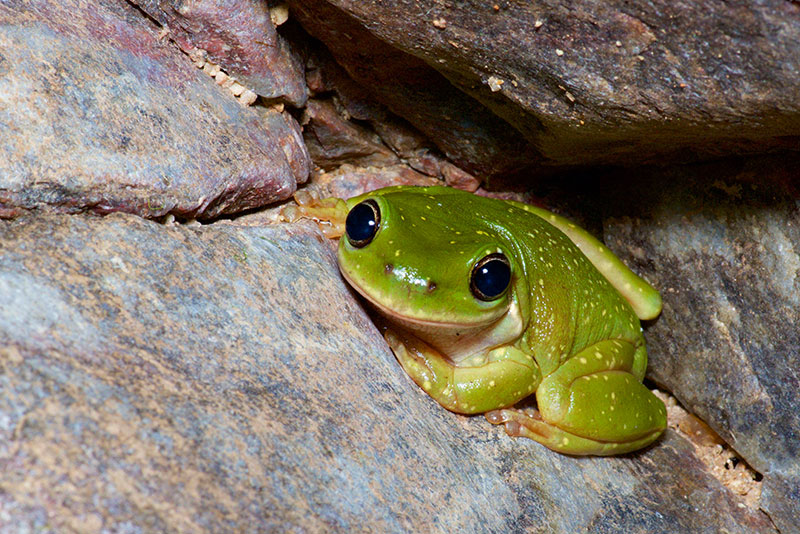
While looking for pythons on the rocky walls of the gorges, my flashlight happened upon an attractive Marbled Velvet Gecko. This is a fairly large gecko; it was significantly larger than any of the road geckos I had seen (but a full-grown Nephrurus amyae would be both much larger and much goofier-looking).
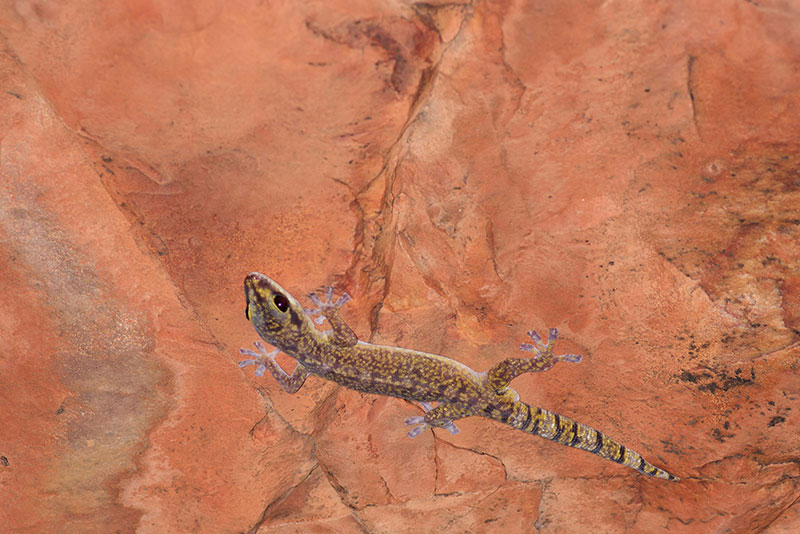
Also while looking for pythons on the rocky walls of the gorges, my flashlight happened upon a python. Unfortunately, it was still mostly concealed in a crevice and I only snapped off this one incredibly bad photo before it re-concealed itself. There are two python candidates in this area: the smaller, widespread Large-blotched Python (which I had seen before) and the larger, localized Centralian Carpet Python (which I had not). My one picture is so bad that I studied it for a long time before eventually reaching the sad conclusion that this was probably a Large-blotched Python. (This was later confirmed by folks more knowledgeable than I). I went back to the same spot later in the evening and again the following evening hoping for another view, but it was not to be.
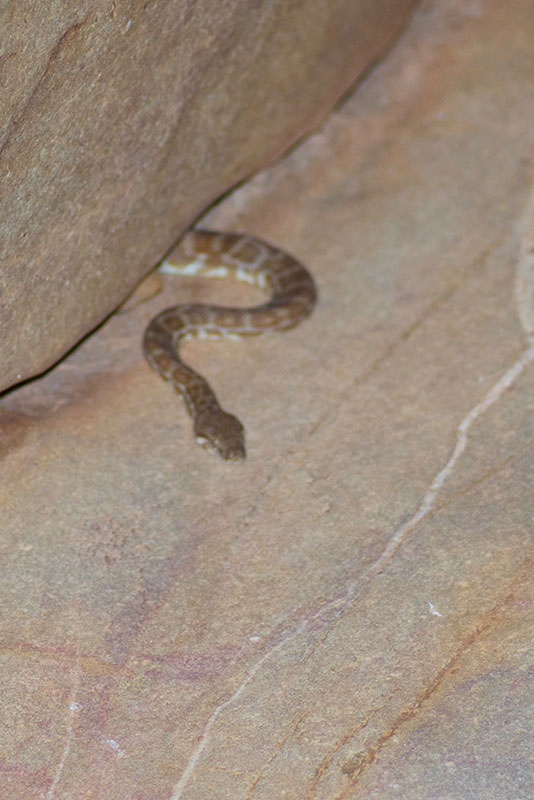
Right at the edge of the waterhole in one of the gorges I saw yet another Orange-naped Snake crawling across the sand.
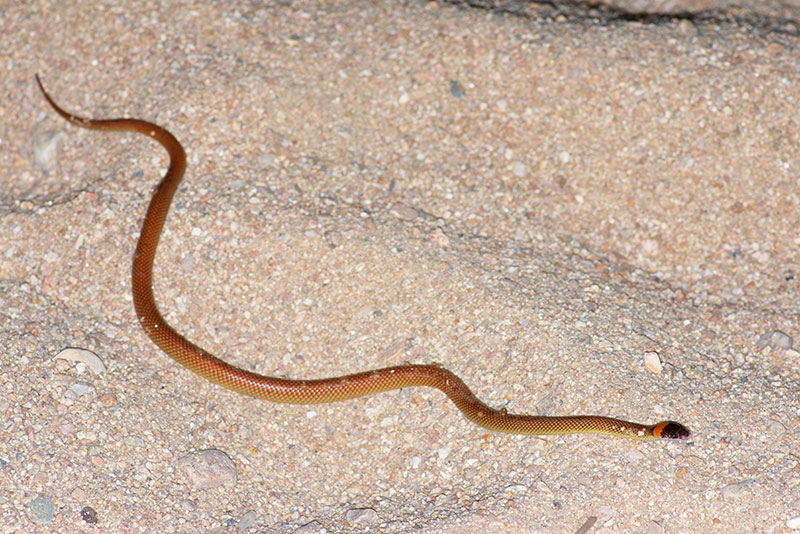
While I was wandering over the rocks in the gorge looking for frogs to photograph, I noticed something else that was probably out looking for frogs. This large snake took me aback for a moment - what was a Speckled Kingsnake doing in the middle of Australia? Ah, but this was no colubrid of any pattern; this was a big Australian non-python, therefore a venomous elapid, probably a dangerously venomous one. Indeed, it was a Mulga Snake, a.k.a. King Brown Snake, the largest venomous snake in Australia, though this was only a medium-sized individual. They vary extensively in color and pattern, though it is typical for many or most scales to be lighter in front and darker in back, forming a reticulated pattern. Like the python, this one pulled itself back into a crevice in the rocks fairly quickly, but at least I managed to get non-horrible photos first.
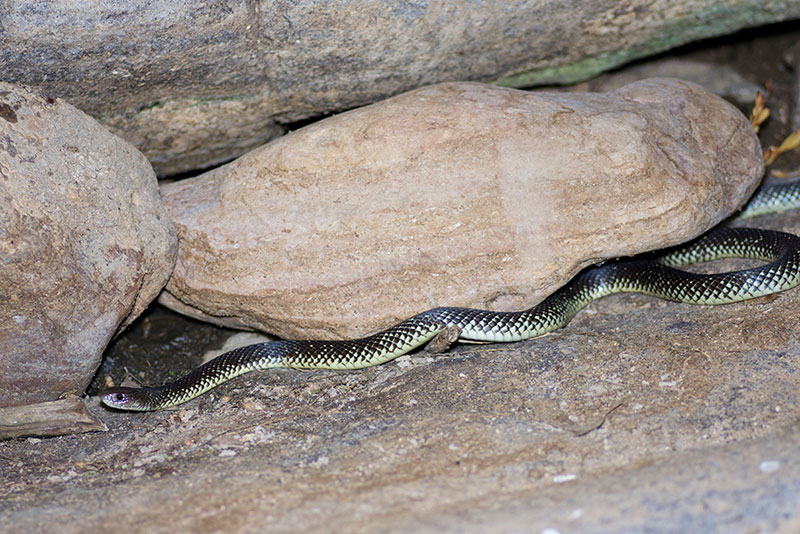
As mentioned earlier, I returned the following night to see if I could find that python again, which was a failure. However, I did find this snake again, or perhaps a nearly identical individual in nearly the exact same spot. It too only allowed a couple of photos before disappearing into the crevices.
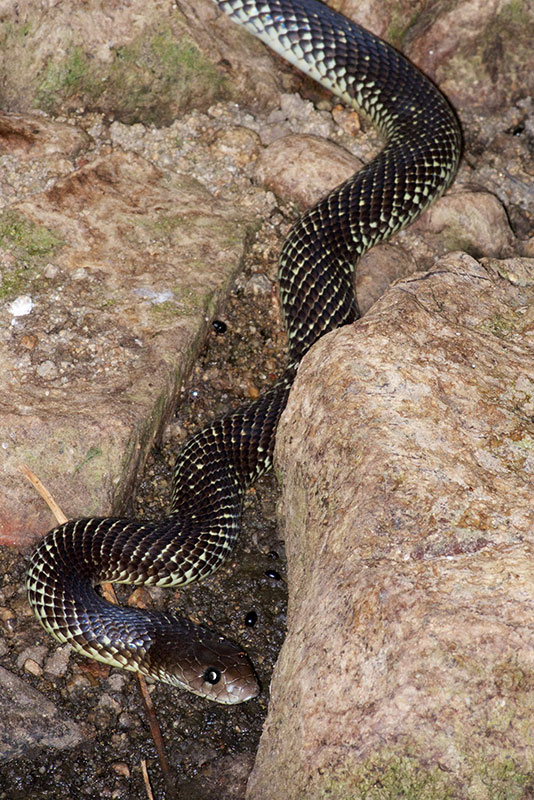
When I left Glen Helen, I drove back to Alice Springs, from which I flew to Adelaide to begin my first visit to South Australia.
